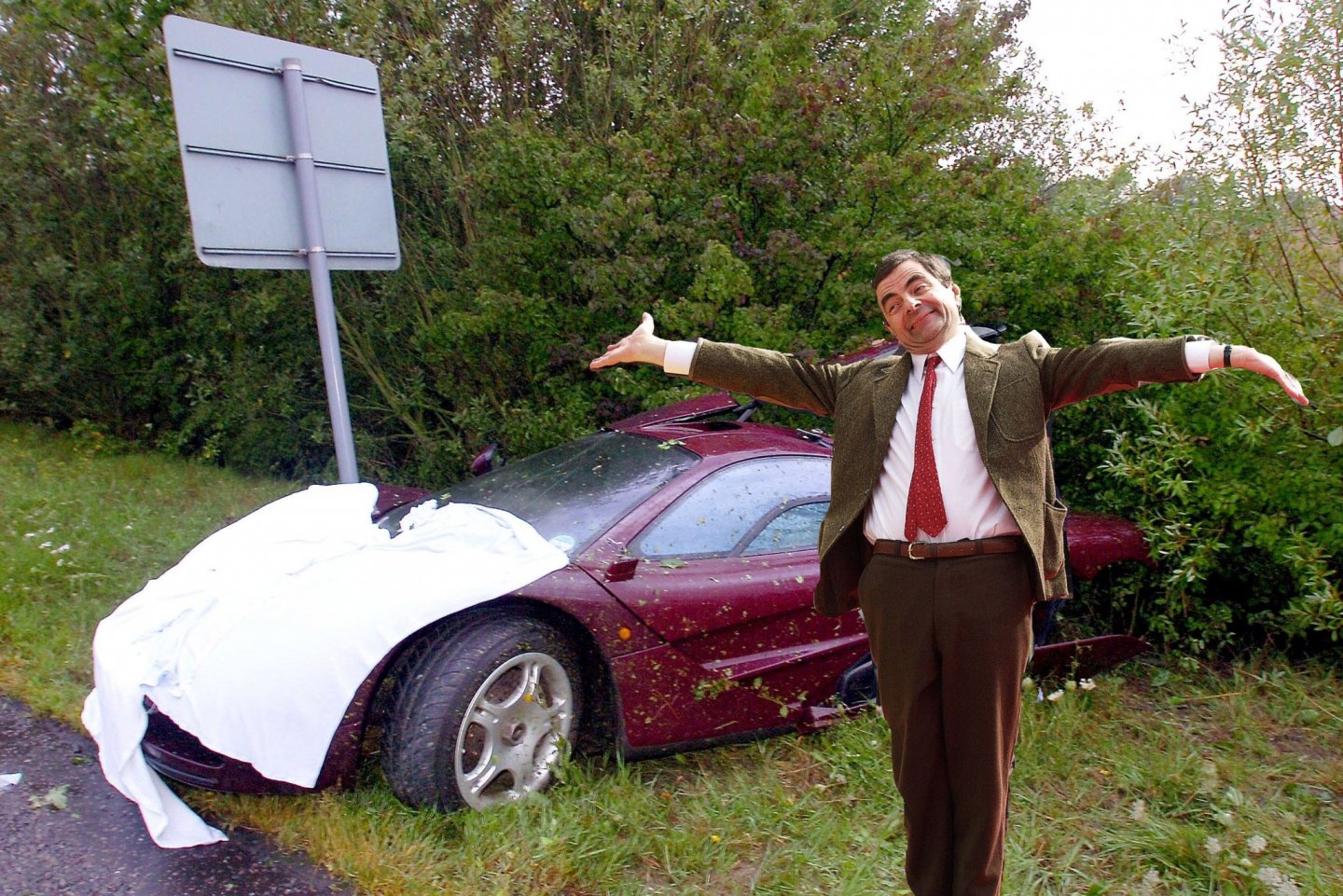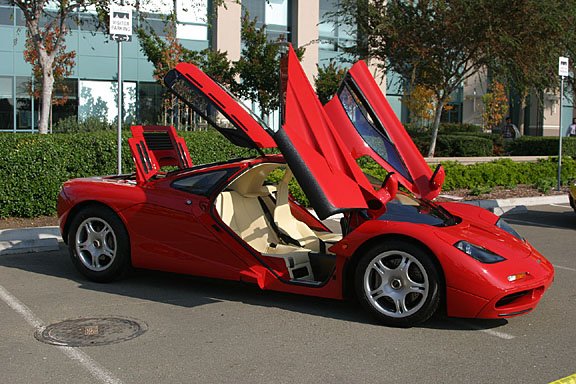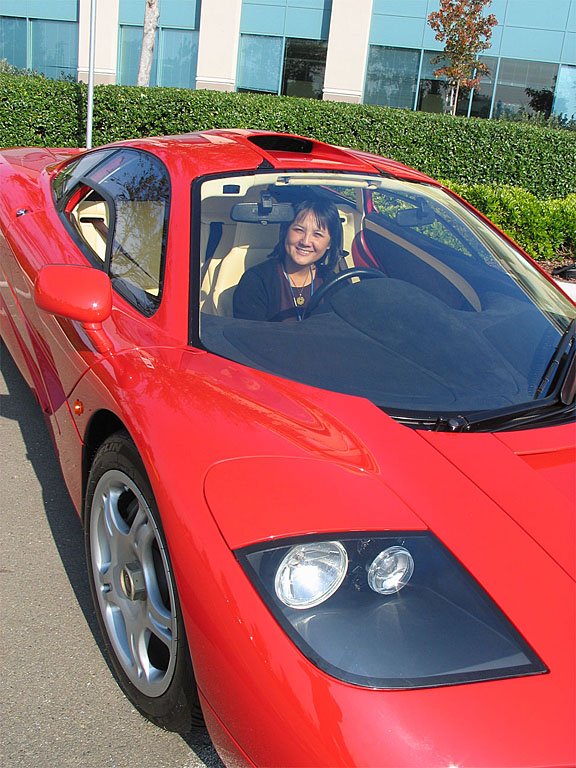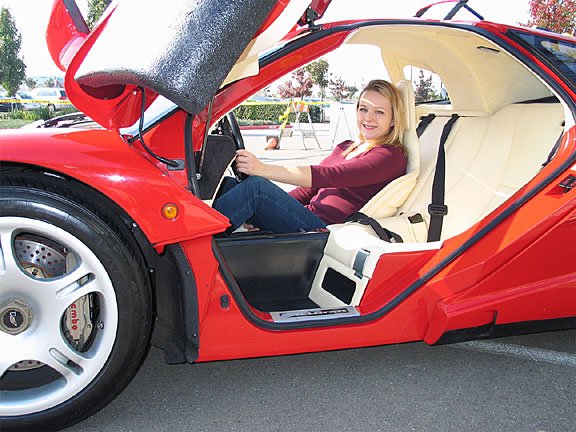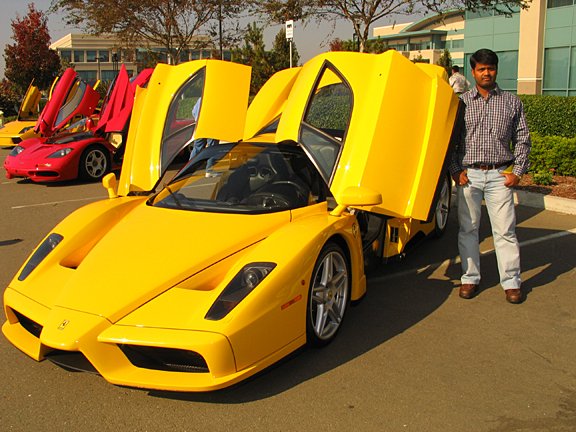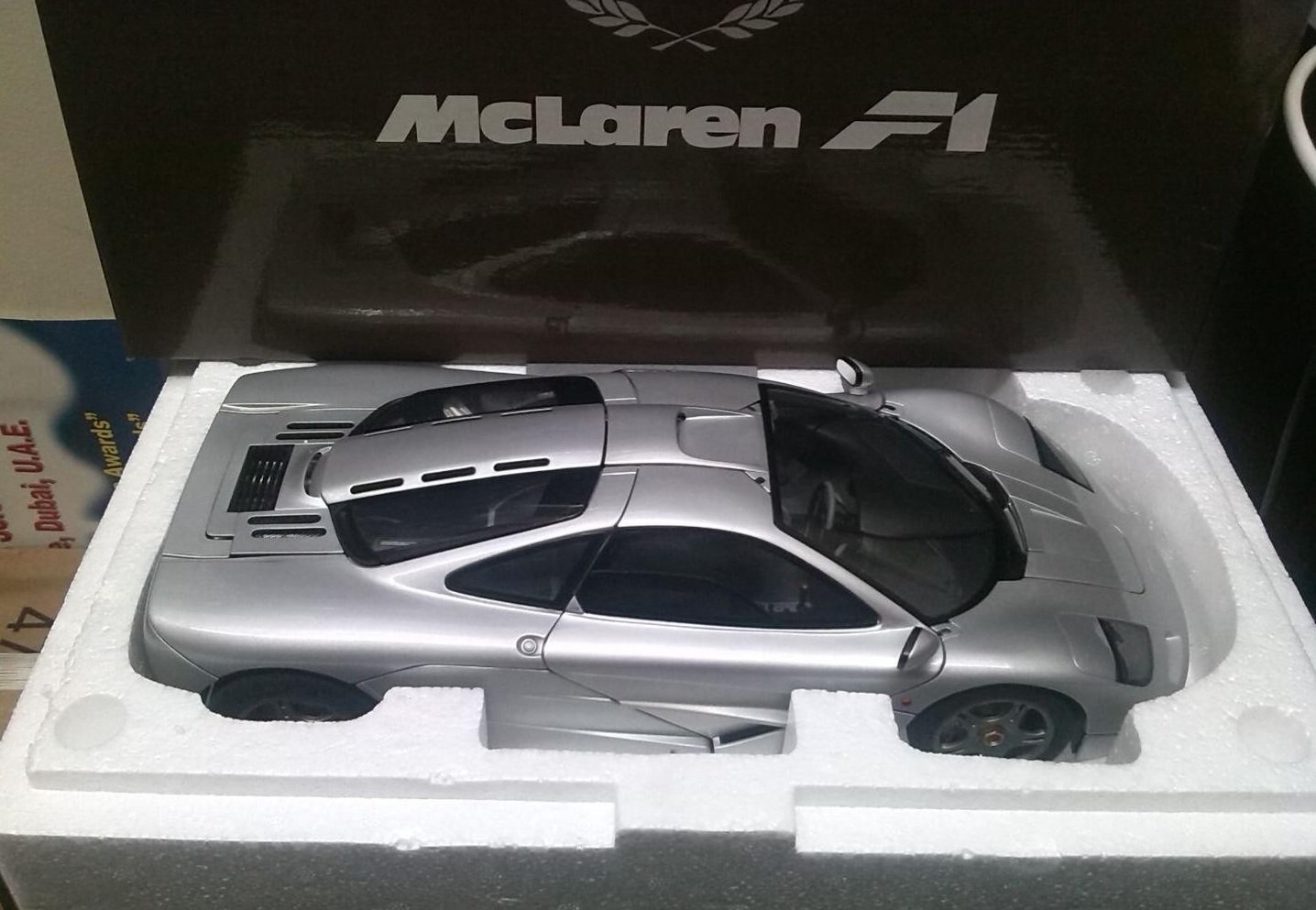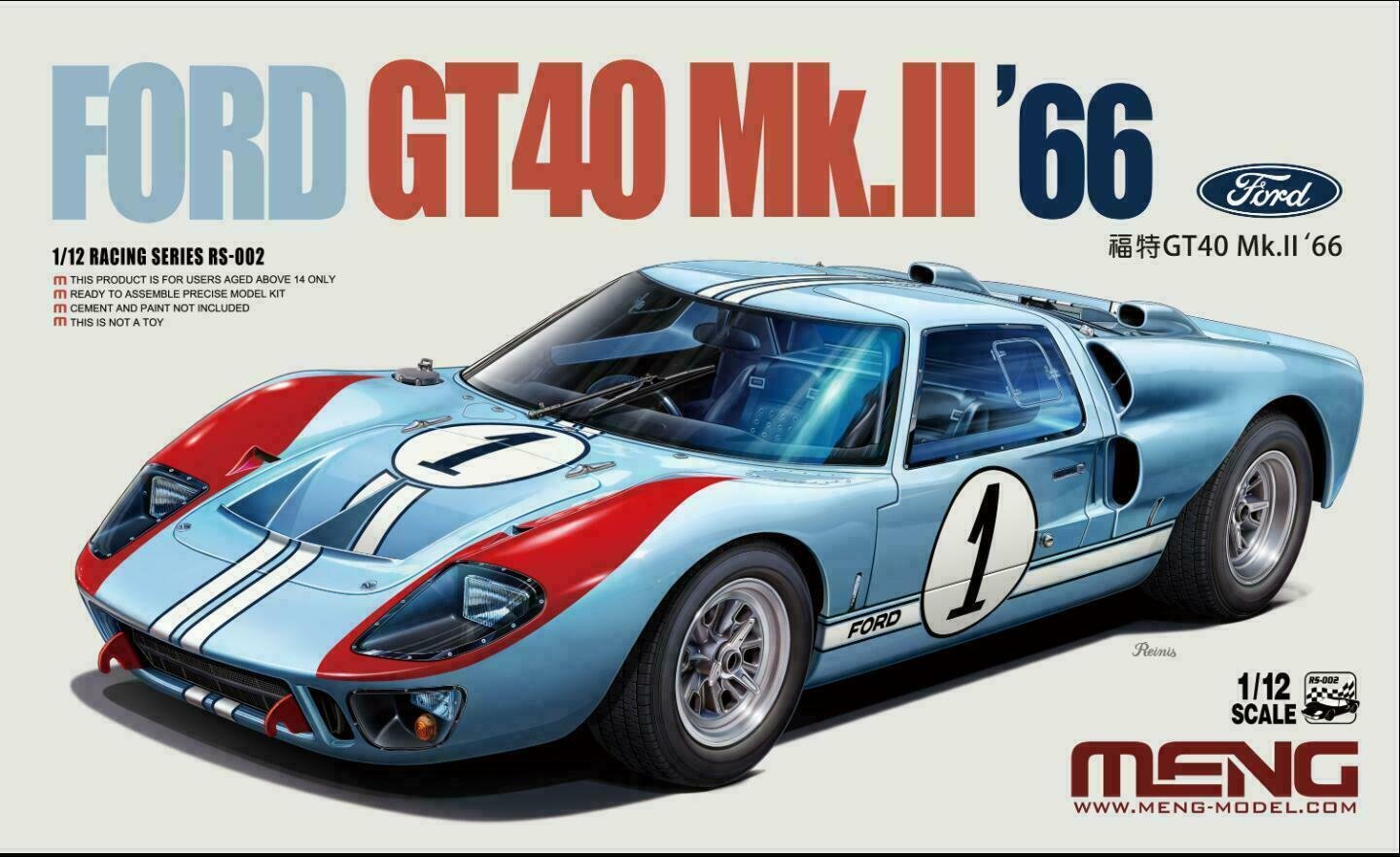-
Posts
3,563 -
Joined
-
Last visited
Content Type
Profiles
Forums
Gallery
Events
Everything posted by yvesvidal
-
Next, I have to put together the chassis of the F1: As you can see, Paul's Model Art took a lot of liberty and went with a flat platform, which is quite different from the real car. I guess we cannot blame them for this shortcut, as it makes the model a lot easier to assemble and probably reduce the already expensive cost of the product. Below is a close-up on the famous transmission developed specifically for the McLaren F1. You can see the two strange "cobras" of aluminum hoses used to extract the heat from the rear brakes. McLaren has a patent on this feature. Close-up on the exquisite BREMBO brakes, with etched/Stamped (?) steel rotors and the central locking nuts for the wheels: Hub and brake assembled: For comparison, here is a picture of brakes on the F1: The brakes took a lot of efforts during their development. Gordon Murray was adamant about using Cast Iron brakes despite their heavier weight. It was the only way to stop a car running at 200 MPH, on a short distance. The pads were a lot more difficult to select and multiple combinations were tested. Finally, 4 pads made of Carbon Fiber were retained for the final car. The F1 being a driver car with a future for competition, was not equipped with Power brakes servo nor ABS. That decision was taken to save weight and allow a better feel of the brakes by the driver. Gordon Murray was inflexible on the 1000 KGrs weight of the final car and reluctantly accepted the 18 additional KGrs of the cast iron rotors, taking his precious creation to 1,018 KGrs. On a side note (and that is only my opinion), the lack of ABS may be the reason why our Mr. Bean wrecked his F1 on wet pavement. Switching from an ABS equipped car to a non-ABS/non-powered brakes car can be disconcerting at times, if you are not fully focused on the driving. Time to re-assemble the front axle and the wheel and here is the skate board: Yves
-
So, the next delicate phase was the repair of the front hub wheels. One of them was completely broken and had lost its lower connection to the suspension arm and the connection to the steering rod. Using a drill of 1.5 mm and a tapper bit of 2 mm, I carefully and delicately drilled and prepared two holes for the lower pivot and steering rod. The new anchoring system using 2 mm stainless steel bolts, is much sturdier than the plastic pins originally provided with the model: Strong of the success on the damaged hub, I decided to break the other hub and performed the same modifications. 2 mm x 10 mm for the lower arm pivot and 2 mm x 6 mm for the steering knuckle. Below is the hub, with the tapped holes: The front axle can then be re-assembled: Close view on the modified hub. That stuff is now solid and will allow the car to be rolled. Yves
-
The first thing was to clean and repaint the front wheels. I have looked at various models of this car on the WEB, and most of them have flaking paint on the front wheels. The rear ones are doing better and are not affected by this defect. It is a good thing as the rear wheels are inserted in force, on a steel shaft and I could not separate them from the chassis. The front wheels are given a bath of Purple cleaner in an ultrasound cleaner. After about 40 minutes of soaking, there are devoid of paint: A coat of automotive primer and the wheels are ready for painting. The original 17 inch rims are made of Magnesium to reduce the non-suspended weight and in an attempt to reach the incredible goal of 1,000 Kilo-Grams for the entire car. After trying different paints, I made my choice on the Tamiya XF-16 (Chrome Silver) which is practically identical to the rear wheel, with a little bit less shine, making them even more realistic. The tires are installed, following the pictures of the real car (asymmetric tires). Now, we can move to the front axle and its broken hub. Yves
-
The enthusiasts of that specific car often wonders who owns one of these marvels. I have heard of the following people (most of them being located in England) and was privy to see an F1 in my entire life, once and only for a couple of seconds.... As we mentioned earlier, the car was produced at 100 units (107 to be exact) and production was halted in the late 90's when the induced recession (Bush era and burst of the Tech bubble) hit the world. The street car was produced at 64 units. Five units were destroyed for the crash testing and tests, and the remainder were turned into racing machines with an enormous success (LM, GTR, GT). Among these 64 street units, the following persons owned at one point or another, an F1: - Roger Waters, singer and bass player of the Pink Floyd band. - George Harrison from the Beatles band. - Rowan Atkinson (Mr. Bean) who crashed his McLaren F1 and sold it later on: - Jay Leno...? Yes, of course, a black F1. He has the McLaren P1 and a couple of others, too. - On the west coast, one former Vice President of Cisco, great car enthusiast and a frequent Pebble Beach Concours d'Elegance participant, added an F1 to his collection of exotic cars. Generously, he shared his passion with us (employees) one day by bringing three of his stallions for colleagues and employees to admire: What the High-Tech bubble wealth could provide you.... Yves
-
In July 1992, was announced the fastest and most extraordinary car ever produced: the McLaren F1. That incredible piece of technology was designed by two seasoned racing engineers, Gordon Murray and Ronald Dennis. It was the first Supercar to reach 231 MPH (374 KM/H), was limited to 100 units worldwide and sported the hefty price tag of 540,000 Sterling Pounds or slightly shy of $1 million in the USA, when you could get one. That car received a standing ovation and was probably the most reviewed and incensed car ever published in the professional and trade press, worldwide. A luxurious book was sent by McLaren in 1992, to potential customers and some extra copies were printed for the commoners. Unfortunately the $500 price tag of the original brochure made it also, difficult to acquire. instead, in 1999, Virgin published an incredible and very comprehensive book called: Driving Ambition. That book was more affordable and I would highly recommend it if you can find it in the used market (Virgin having folded, unfortunately, their books, videos and music division). We will be using pictures out of this book to illustrate the real car with the model. Around the mid-90's, Paul's Model Art, a small German manufacturer of exquisite car models, produced a limited series of 350 (if I am not mistaken) McLaren F1 in the scale of 1/12. The model is made of metal, rubber and plastic injected parts. It is absolutely beautiful and is probably as of today the best rendition of an F1 ever made. My brother was fortunate enough to find one of these rare pearls in a specialized shop in Toulouse, in the south of France. Despite the hefty price tag, I asked him to purchase it, knowing full well that the real car would never be an option for me. After a few years, that model has aged and is now in need of a a little refurbishing. The paint on the front wheels is peeling and one of the front hubs is broken, causing the car to sag on one side. In addition, some dust has made its way into my model and I decided to tackle the restoration of that expensive and rare model. Stay tuned for more details on this incredible car and model. Yves
-
Welcome to this forum Bianca. I just purchased one of these old kits and will be watching your progress. This will translate into a really cute little daysailer, I am sure. Yves
- 7 replies
-
- sakonnet daysailer
- first build
-
(and 1 more)
Tagged with:
-
KPNuts, Since you have the Magnifier kit, how does it compare to the new MENG kit? I am curious to know if these two kits are similar or if the new MENG kit is way better in term of details and parts. Here is a link to the introduction of the new MENG kit: The Modelling News: Preview: The final iteration of Meng's 12th scale Ford GT40 Mk.II 1966 Le Mans 24h in full colour... Thanks for your time. Yves
-

Express Train by kpnuts - FINISHED - Ugears - no scale
yvesvidal replied to kpnuts's topic in Non-ship/categorised builds
I published a Blog on this model a while back. It is not easy to build and even less easy to make it run correctly. Yves -

Trumpeter Scharnhorst Battlecruiser 1/200 is coming soon.
yvesvidal replied to yvesvidal's topic in Plastic model kits
My sentiments, exactly. Yves -
You can find local shops that will chrome parts for you. The price may be very reasonable and if you prepare your parts correctly, the final results will be outstanding. Yves
- 91 replies
-
- amati
- grand banks 46
-
(and 1 more)
Tagged with:
-
Superb book. The pictures are stunning and the overall quality makes my mouth drool. Yves
- 261 replies
-
- muirneag
- vanguard models
-
(and 2 more)
Tagged with:
-
Mike, At the scale of 1/700th, this is self inflicted torture. How much are you going to spend in chiropractor and therapy after this PE set? Yves
- 179 replies
-
- hatsuzakura
- pit road
-
(and 2 more)
Tagged with:
About us
Modelshipworld - Advancing Ship Modeling through Research
SSL Secured
Your security is important for us so this Website is SSL-Secured
NRG Mailing Address
Nautical Research Guild
237 South Lincoln Street
Westmont IL, 60559-1917
Model Ship World ® and the MSW logo are Registered Trademarks, and belong to the Nautical Research Guild (United States Patent and Trademark Office: No. 6,929,264 & No. 6,929,274, registered Dec. 20, 2022)
Helpful Links
About the NRG
If you enjoy building ship models that are historically accurate as well as beautiful, then The Nautical Research Guild (NRG) is just right for you.
The Guild is a non-profit educational organization whose mission is to “Advance Ship Modeling Through Research”. We provide support to our members in their efforts to raise the quality of their model ships.
The Nautical Research Guild has published our world-renowned quarterly magazine, The Nautical Research Journal, since 1955. The pages of the Journal are full of articles by accomplished ship modelers who show you how they create those exquisite details on their models, and by maritime historians who show you the correct details to build. The Journal is available in both print and digital editions. Go to the NRG web site (www.thenrg.org) to download a complimentary digital copy of the Journal. The NRG also publishes plan sets, books and compilations of back issues of the Journal and the former Ships in Scale and Model Ship Builder magazines.





